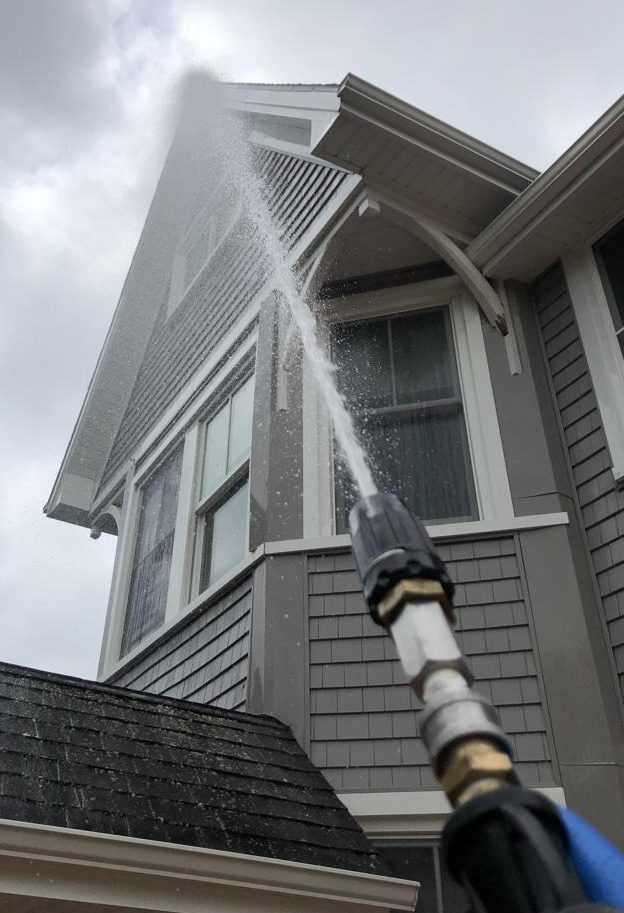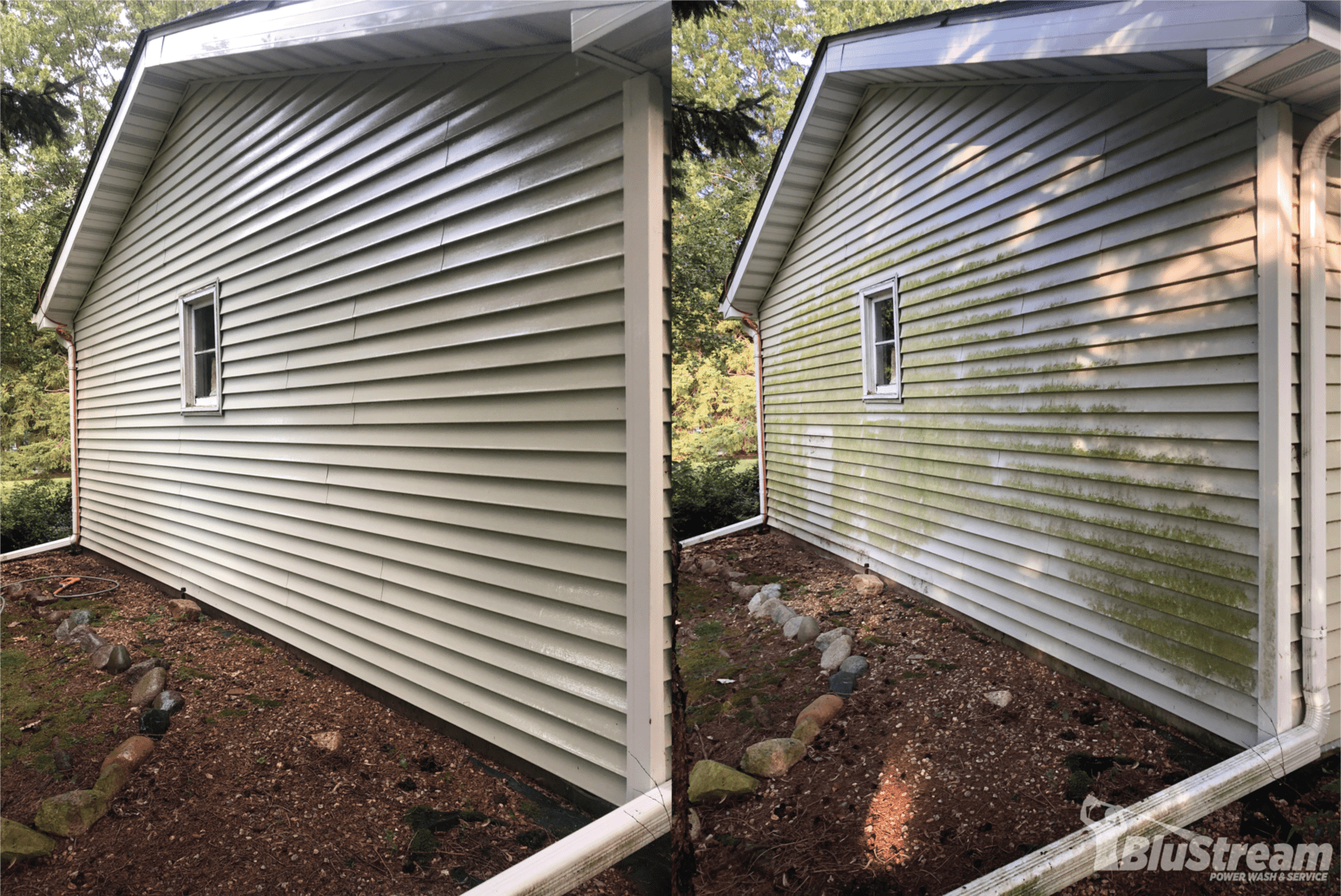Safeguard your home’s exterior with proper House Washing.
Safeguard your home’s exterior with proper House Washing.
Blog Article
Recognizing the Key Differences Between Pressure Washing and House Washing
The distinction between pressure washing and home washing is critical for property owners looking to maintain their residential property's exterior. While pressure washing employs high-pressure water jets to eradicate persistent gunk from durable surfaces, residence washing uses a gentler technique that includes environment-friendly cleaning representatives to safeguard more fragile materials.
Interpretation of Pressure Washing
Pressure washing, commonly referred to as power washing, entails the usage of high-pressure water spray to remove dust, grime, mold and mildew, mildew, and various other contaminants from numerous surfaces. This strategy is particularly reliable on difficult surfaces such as concrete, block, and rock, making it a suitable option for cleansing driveways, outdoor patios, and sidewalks. The procedure generally makes use of specific equipment that produces water pressure varying from 1,500 to 3,000 psi or even more, guaranteeing reliable cleaning also in challenging problems.
Pressure washing is not limited to exterior surface areas; it can likewise be employed for numerous applications, including automobiles, outdoor furniture, and devices. Nonetheless, it is vital to keep in mind that the intensity of the water pressure can potentially harm fragile surfaces, such as timber or repainted finishes, if not taken care of correctly. Therefore, selecting the proper pressure setting and nozzle type is critical for ideal outcomes.
In addition to surface cleaning, pressure washing can likewise play a considerable function in preserving the durability of frameworks by protecting against the buildup of hazardous contaminants that can result in degeneration. In general, pressure washing offers as a powerful tool for improving tidiness and preserving the integrity of different surfaces.
Interpretation of Residence Washing
Residence washing describes the detailed cleaning of a home's exterior surface areas, making use of a mix of low-pressure water and specialized cleaning services. This method is designed to get rid of dust, mold, mildew, algae, and various other impurities that collect in time, preserving the visual allure and architectural integrity of the building.
Unlike pressure washing, which utilizes high-pressure streams of water, house washing emphasizes the usage of lower pressure to avoid damages to fragile surfaces such as siding, roofing, and repainted coatings. The cleaning services utilized are usually biodegradable and created to successfully tackle specific problems, ensuring a thorough tidy without jeopardizing the environment or the honesty of the products being treated.
House washing is specifically beneficial for keeping the look of plastic, timber, stucco, and block exteriors. Normal house washing not just enhances curb allure however additionally adds to the longevity of a home's exterior surface areas by reducing the results of damaging microbes and toxic wastes. Homeowners are motivated to set up house washing regularly to guarantee their residential property remains in ideal problem, hence safeguarding their investment.
Trick Techniques Used
In the world of outside cleansing, various methods are utilized to achieve optimal results throughout residence washing. The primary method involves soft washing, which uses low-pressure water incorporated with specialized cleaning services. This technique properly gets rid of dirt, algae, and mold without destructive fragile surfaces such as wood or painted exterior siding.
One more secret strategy is using a surface area cleaner add-on, which is particularly effective for flat surfaces like patios and driveways. This tool provides uniform cleaning by utilizing rotating jets that cover a larger location, making certain consistent outcomes.
Chemical application is additionally crucial in house washing. Cleaners such as sodium hypochlorite or biodegradable detergents are often used to damage down difficult spots and organic growth. House Washing. Appropriate dilution and application techniques are vital to lessen any type of potential damages to plants or landscape design
Suitable Surfaces for Each
When identifying the appropriate cleansing method, it's crucial to think about the sorts of surfaces entailed. Pressure washing, which utilizes high-pressure water jets, is ideal suited for hard, sturdy surfaces that can withstand extreme force. Typical applications consist of driveways, patios, walkways, and decks. These surface areas typically accumulate difficult discolorations, such as oil, grease, and mildew, which call for the powerful cleaning activity provided by pressure washing.
On the various other hand, home washing commonly employs a softer approach, using low-pressure water incorporated with specialized detergents. Home washing effectively removes dirt, pollen, and mold and mildew without running the risk of damages to the exterior surface.
Benefits and Downsides

On the other hand, residence washing makes use of a gentler method, commonly using a combination of low-pressure water and cleaning options. This approach is more secure for painted surfaces, exterior siding, and roof coverings, helping to preserve their integrity. The main disadvantage of residence washing is that it might not get rid of deeply embedded dust or stubborn stains as properly as pressure washing, which can call for more time and numerous applications.

Verdict
In recap, pressure washing and home washing serve distinctive functions in exterior cleansing. Pressure washing employs high-pressure water streams, making it ideal for long lasting surfaces and reliable go to my blog against challenging spots. Conversely, house washing uses a low-pressure method with biodegradable options, guaranteeing the safety and security of delicate products. Comprehending these distinctions assists in informed decisions regarding the proper cleaning technique based upon surface kind and condition, eventually advertising efficient upkeep and longevity of outside surfaces.
Report this page